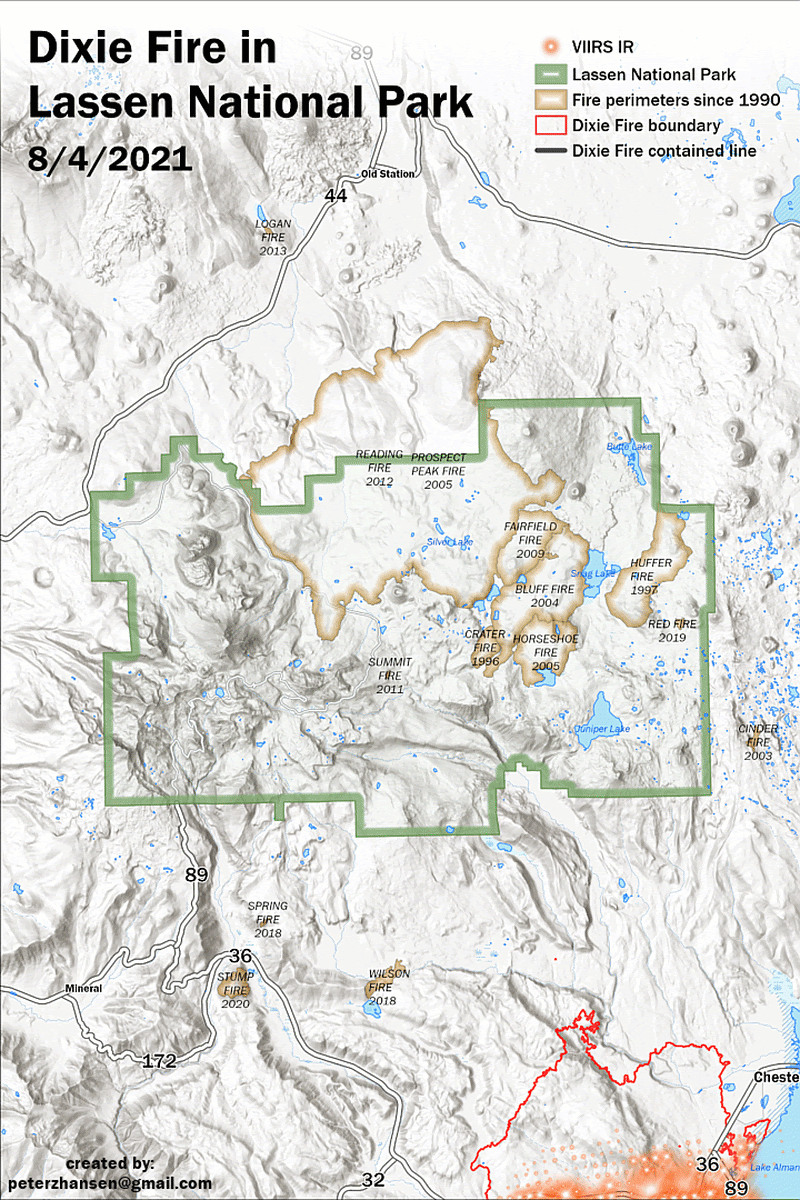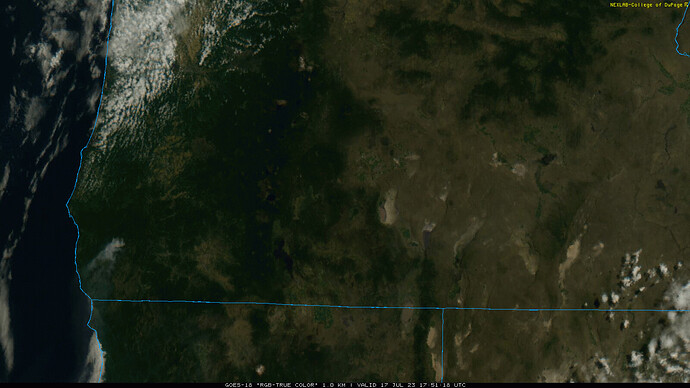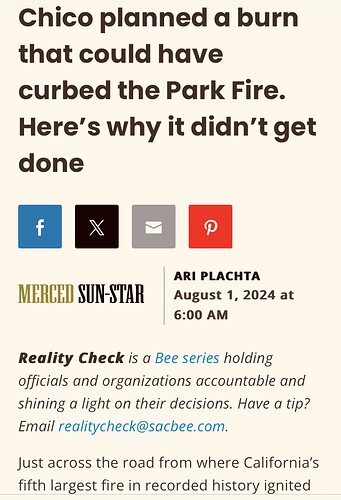Giving decisions of such magnitude and consequence to any civil service person or group is not how government works. As flawed as the system is there must always be public comment and input in such significant decisions.
I am impressed at the amount of keyboard operators there are in this thread! You all must be some of the best OG Operations Section Chiefs that I have seen in my 25 years of doing this. I get that there will always be Monday morning quarterbacking, but in a time of instant live feeds and scanner listenening, we have Sunday morning quarterbacking. How about let’s give some grace to the professionals on the ground to do the right thing. None of us are in this profession set out to do the wrong thing. Every agency has different sets of SOGs and focuses. Let’s except them for what they are and move on. In the end we all want the same outcome… we all come home. There are things that need to change but we are not going to solve them being the fire gods we pretend to be in this forum.
I will probably be suspended for this so I will graciously see my self out.
Back to the original post which began all of this… is there space to manage a fire for ecological benefit in our current new fire environment? The answer is yes. But none of it exists in a vacuum. The decision has to be science based with a clear and defined set of objectives.
The AHJ has to plan for it, staff for it and then be prepared to manage it The reason I posted the link to the Reading Fire, is that it was an example of an early season fire that was allowed to burn. As it got later in the season it woke up and made some big runs at several communities and required significant augmentation of resources to contain. In that time period several other fires broke out and destroyed communities. Valuable resources that were not from the NPS were tied up on a managed fire.The same situation occurred last year with the Tamarack.
We should not treat anyone who wants to manage a fire any different than a homeowner who has a burn pile. Have a line around it that will keep the fire from escaping, have a water source and a shovel. These requirements are put in place so that the fire department does not have to be called every time someone who has a burn pile gets nervous or the pile goes up faster than they anticipated.
The mutual aid system ( CFAA, CFMA, MMU) is not intended to support manged fires. It is not fair to the citizens and to the agencies who have to come and try and control the fire once it is outside the box.
As far as people having to accept the responsibility for living in the WUI… there is a certain amount of risk that they accept.
The point of the analogy that seems to be missed is that you cannot blame the results of your decisions on the people who are affected. It is not fair to allow your dog or bear to roam the neighborhood and cause havoc.
To be clear I am not suggesting that the current fire is being managed, just responding to a post that discussed the benefits of managed fire. The original post in this string outlined an article where prescribed fire escaped and destroyed several communities in New Mexico.
Keyboard operators, Sunday morning quarterbacks? Disparaging those who have a different point of view does not make an argument stronger. While I totally agree that nearly everyone in the fire community goes to work everyday to do the best right thing at all times, the argument is the “SOGs and focuses” are out of line with objectives, re-introduce fire to rebalance the forest-fire health and protecting the wellbeing of the public and meeting public expectations.
Norcal, I agree 100% with your point about having contingency built in before you light it. I definitely didn’t articulate it very well, but that was kind of where I was trying to go with my science fiction in-season burning scenario - it would be great if the people trying to keep this fire out of the Mariposa Grove and Wawona had been snagging their control lines all spring, prepping Highway 41, already had the tricky parts plumbed, and had the luxury of starting the fire at the top of the hill, instead of midslope.
I think a big failing of the project that caused the Hermits Peak fire was failure to recognize the potential for such an enormous escape. In the current climate, we can’t just put fire on the ground in the middle of 500,000 acres of contiguous forest which hasn’t had natural fire in a century without some serious strategy. If we are going to burn in timber, we need to look at the landscape-scale for opportunities to minimize potential for a major escape before we light - for example, putting fire back into a landscape already fragmented by previous high-severity fires, or sequencing large-scale thinning and burning units so they slowly build a network to contain future prescribed fire entries. We had some real opportunities to do this during the heyday of biomass thinning in Northern California (about 1985-2010). Tens of thousands of acres were biomass-thinned in the Almanor Basin, and could have been followed up with a program of underburning fairly easily, but private landowners weren’t on board, it wasn’t a priority for the agencies, and nobody knew what was coming (near total destruction of timberlands in Dixie Fire). https://earthengine.google.com/timelapse#v=40.35305,-121.17864,10.363,latLng&t=0.1&ps=50&bt=19840101&et=20201231&startDwell=0&endDwell=0
As of an aside, I’d add there’s a lot we can’t know about how each action we take will affect the future. The Reading Fire, as messy as it was, may have kept the Dixie Fire from burning all the way to Burney or Shingletown nearly a decade later, and the Caples Burn (escape) helped keep Kirkwood from burning up during the Caldor Fire. The two weeks where Dixie was spreading very slowly in the Reading Burn (Reading covered this ground in 2 days) bought time for firefighters to fire out Highway 36, saving the Lake Almanor Peninsula and Westwood, and also to check up the fire before it got to Susanville and Janesville. A lot of resources that might have been needed to protect Old Station or parts-west in last week of August were instead available to go to Caldor to save Meyers and Christmas Valley.
Wouldn’t it have been better to allow logging and utilize some of that biomass? Second concern is air quality… wildland fire smoke is the biggest cause of air pollution on the West C
Depends on whether ya think biomass needs to be ‘utilized’. A forest is a functional thing in itself.
Meanwhile, summer smoke in the West Coast mountains is unfortunately, something people will need to adapt to. Sucks for the PCT hikers, Central Valley ag workers—we need to figure something out there—but the decades without smoke were probably the anomaly in the long term, not the recent years with it back. The more healthy burning that can be done in the other seasons with good conditions for ventilation, the better.
You’re saying the entire population of the West, and occasionally the entire US should suffer and allow massive air pollution because the USFS cannot manage their land ? That’s insanity. Fire is a management tool and the USFS is misusing that tool… wildfire is not included in NEPA. Prescribed fire under defined weather and fuel conditions might be allowable…but you simply can’t burn your way to healthy forests.
I don’t think it’s a question of what we’ll ‘allow’, as many of the significant smoke-producing incidents have been essentially beyond our control and will continue to be without landscape-scale Rx burning. Rock and a hard place. That said, we’re getting off topic.
Looking better (more muted) on satellite IR than this time yesterday. Wonder if it’ll hold.
This thread may not be the right place to have this discussion, if so I apologize.
There is reason to believe that air pollution from prescribed fires is considerably less dangerous than the pollution from massive wild fire. That reason is that it seems that the most dangerous pollutant is PM 2.5 (Particulate Matter smaller than 2.5 micrometers). PM 2.5 is hard on lungs but worse it gets into our blood stream and may even pass the blood/brain barrier. Little balls of weird carbon compounds are not good for any of our organs. We are not equipped to clean them out.
Big runs in heavy fuels result in a lot less complete combustion – thus a lot more PM 2.5 – then does a clean burn of the understory or piles of dead and downed.
The few studies that have been done seem to support this logic, but the answer is not fully locked down.
Our forest are a mess and we don’t fully understand how to clean them up or where the money to do it will come from.
It seems pretty clear that we need a multi-pronged approach and that we need to be careful to be skeptical of our own thinking so that we can learn as we go forward.
Thanks
The reason they held off on tanker drops was because they were still getting civilians out of the area.
Regardless of changing burn windows, in-season burning is still possible. We burned 150 acres today with Chico FD and a wide variety of NGO collaborators. At times, we could see smoke clouds from the Sites Fire.
LRA departments can do what they want with rx fire, regardess of burn restrictions on nearby SRA. Chico FD took some Facebook heat for burning during fire season, but the weather was in prescription and ample resources were available.
Conditions were very consistent today, with only minor changes in RH and temp between 8am and noon. High 70s, with RH 24-28%.
Here are some ramblings around the burn.
#ScoopMissed = Yes!
Disappointed in Sac bee & others = Yes!
Surprised they missed the bigger points & context around this subject = Nope!
Can you watch & listen for yourself the youtube live stream where that exact comment came from and has since been thoroughly addressed by the owner = Yes!
2 cents here from a stakeholder - please no “cancel culture” or un-nicery! I hope Sacbee reads this too.
Choosing to narrow a readers view to a single comment as if “it” is a SCOOP du jour, at this point is dangerous and 100% mis-leading to the public. It’s 2024, Humans that live in/around fire ecosystems deserve more thoughtful/informative conversations & journalism WHENEVER land AND emergency management topic’s come up. Given the point of orgin of “the quote” - it’s beyond apparent that reporters (council members even?) are not well informed - at all perhaps - of the SOLID educational conversations, products, & community following the #lookout.
https://www.sacbee.com/news/california/article290538999.html
Zeke (in his livestream) and Quinn-Davidson’s (in the article) most interesting and salient point to me is the “power of small burns” stuff. A 50-acre burn in a local park might have prevented tens of millions in property and timber losses this year. Some relatively small projects saved a good chunk of Cohasset. Thinning along a single highway corridor seems to have preserved Butte Meadows. Etc.
The butterfly effect is real when it comes to fire on the landscape! I wish officials would see this and understand that when burns “don’t pencil out” on the local level it often ends up really not penciling out when it comes to blown-up Cal Fire/USFS emergency suppression budgets, hiked fire insurance rates, etc.
Here is a down and dirty 2 minute reference to a successful VMP, on many fronts. Resource benefit, training and ultimately reduction of spread of potentially catastrophic fire. The spread model in the intro is an actual SIM for the incident ( w no suppression action),incident audio and video.
Short, sweet and valid.
Interesting opinion article
UCLA has conducted significant research on the effects of wildland fire smoke. A recent study published in the journal Science Advances found that inhaling fine particulate matter (PM2.5) from wildland fires led to between 52,500 and 55,700 deaths in California over an 11-year period from 2008 to 2018 101 102. This study also estimated the economic impact of these health effects to be between $432 billion and $456 billion 101 102.
The research highlights that long-term exposure to wildfire smoke is becoming an ongoing problem, contributing to chronic disease formation 101 10. The study’s lead author, Rachel Connolly, emphasized the need for investment in forest management and climate mitigation to reduce these health impacts 101 10."



